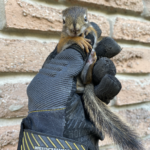Winter can be a tough time for wild animals, as they must adapt to the colder temperatures and limited resources. However, these creatures have developed a variety of strategies and adaptations that allow them to survive and even thrive during the winter months. In this blog post, we will explore some of the ways that wild animals stay warm and survive the cold.
One common way that wild animals stay warm in the winter is through insulation. Many animals have thick fur or feathers that help to keep them warm by trapping a layer of air next to their skin. This insulation works like a natural coat, helping to keep the animal’s body heat in and the cold out.
Another way that wild animals stay warm in the winter is through migration. Many species of birds, for example, fly to warmer regions during the winter months in order to avoid the cold. This allows them to access more food and other resources, as well as to escape the harsh winter conditions.
Hibernation is another strategy that some wild animals use to survive the cold winter months. During hibernation, animals enter a state of torpor, in which their body temperature and metabolism drop significantly. This allows them to conserve energy and survive on minimal resources until the weather warms up again.
Finally, some wild animals survive the cold by hoarding resources. Many animals, such as squirrels and chipmunks, gather and store food during the warmer months in order to have something to eat during the winter. They may also cache food in hidden locations, returning to these stores when they need a snack.
As you can see, wild animals have a variety of strategies for staying warm and surviving the cold winter months. From insulation and migration to hibernation and resource hoarding, these creatures have developed a range of adaptations that allow them to thrive in even the toughest conditions.









